See the Rare Red Squirrel Colony Found In the Yorkshire Dales
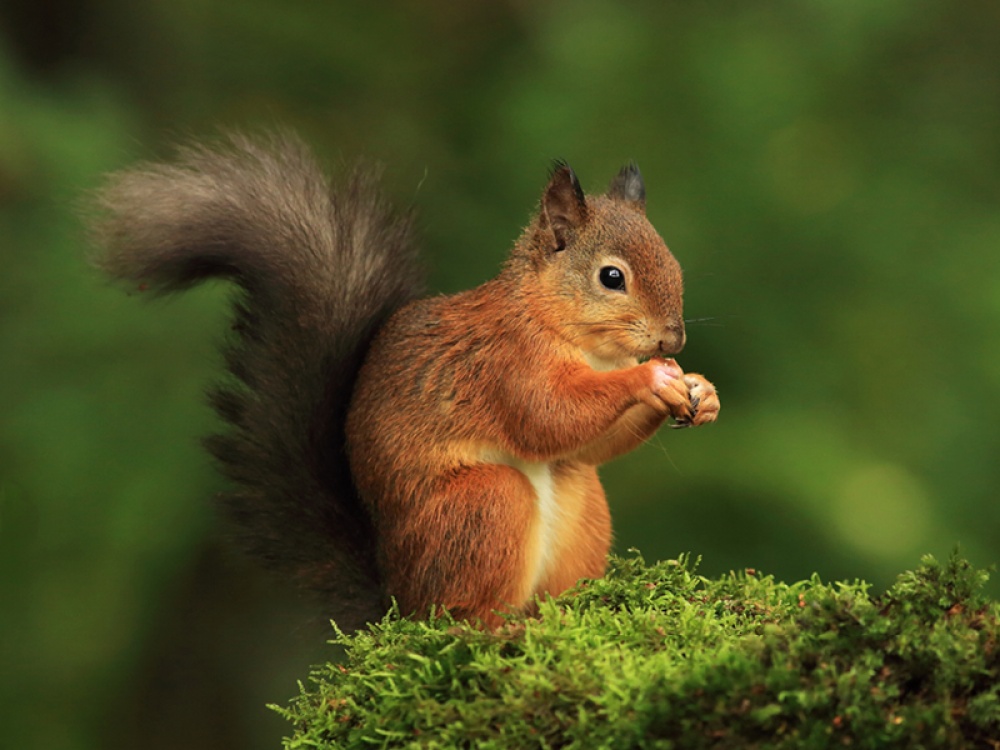
A rare colony of red squirrels has been found hidden amongst a tree plantation in the Yorkshire Dales
Julie Bailey has been involved in red squirrel conservation for more than three decades. ‘I simply can’t imagine my life without red squirrels in it,’ she says. Over that time, she has taken on many varied and increasing volunteer roles on behalf of the native species, red squirrel community groups and like-minded organisations..
’My passion and commitment to red squirrels has been dedicated to areas of Cumbria, Northumberland and south Scotland,’ she says. ‘There are 50 red squirrel community groups working across these areas with similar passion, dedication and commitment to the native red squirrel; without their tremendous efforts, the much-loved iconic red squirrels would not be surviving and thriving in these areas.’
Alongside her ongoing volunteering work, Julie currently works as one of two contracted UK Squirrel Accord (UKSA) Project Officers, funded by the Forestry Commission, working on a squirrel project in Yorkshire, Lancashire and County Durham. This role involves working to increase red squirrel numbers, encourage tree protection and undertake grey squirrel management.
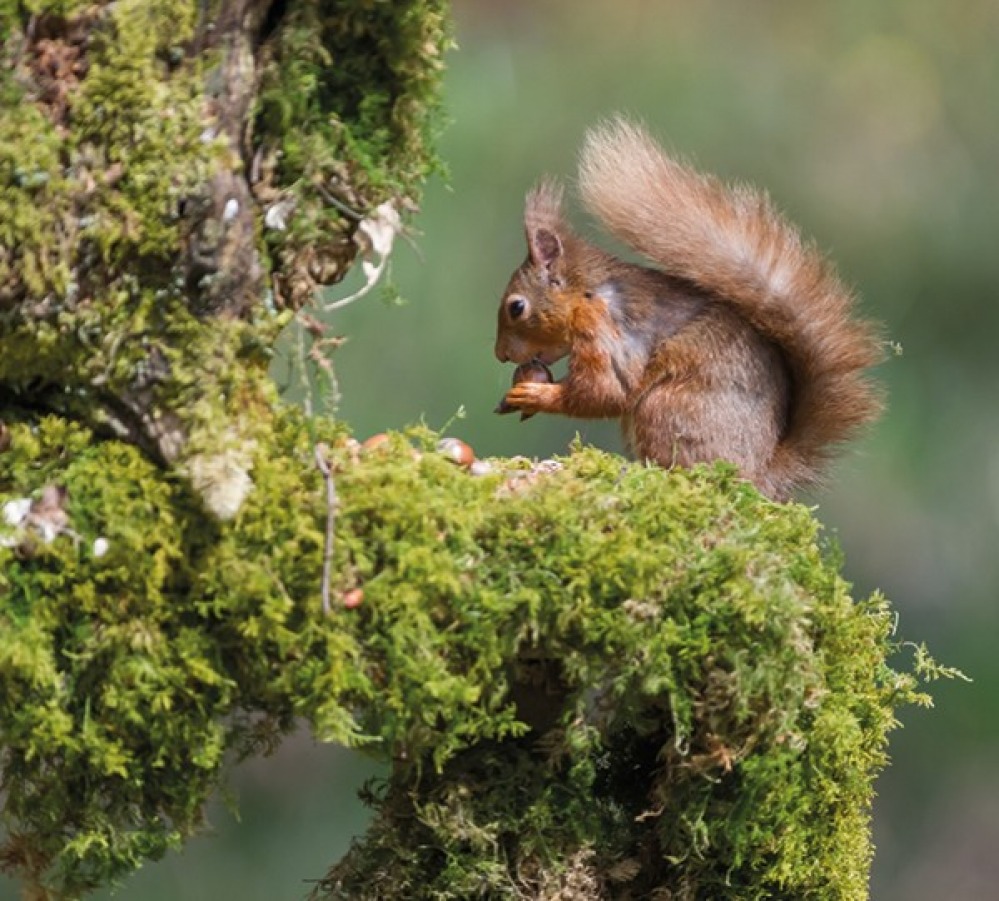
‘Under my UKSA role, I have so far set up three new official community conservation groups, each with a comprehensive Governance Suite in place,’ says Julie. ‘These groups are Yorkshire Dales Red Squirrel Alliance, West Yorkshire Red Squirrel Alliance and Bowland Red Squirrel Alliance, and I have engaged with over 1,500 stakeholders across more than 400,000 hectares of land in 12 months.’
With these new groups, Julie aims to advance education, community development, heritage, science and environmental protection particularly concerning the conservation of the native red squirrel.
Endangered red squirrels have been found for the first time in a privately owned 18-hectare Sitka spruce plantation in the western side of the North Yorkshire Dales, and Julie was the one who identified them. She says this plantation (used for timber and pulp production, but also for Christmas trees) ‘sits within a very sensitive landscape’. ‘There is no vehicular access so thankfully there is very little public disturbance to the woodland wildlife that inhabit it,’ she adds.
‘I requested access to survey the plantation using thermal imaging technology as the landowners had plans to fell this wood to restore the peat bog. Thermal technology picks up the body heat given off by an object and over a distance. As squirrels are warm-blooded mammals, they emit heat, which is displayed clearly on a thermal camera, even in difficult conditions, thus enabling us to spot squirrels in dense woodland and on the ground, and at significant distances which otherwise the naked eye wouldn’t see.’
The plantation owners gave Julie permission to survey a specific area and she found a total of four red squirrels. ‘The owners were delighted,’ she tells us. ‘Two monitoring stations were then placed in-situ in the south western edge of the plantation. This captured photographic and video evidence of red squirrels frequently visiting the stations, confirming the colony of red squirrels.’
The landowners are now revising their original plans and have granted ongoing access to continue with a conservation programme throughout the whole plantation. ‘It’ll be carried out by myself and local volunteers from the newly set up Yorkshire Dales Red Squirrel Alliance, which has a growing network of community support and action,’ Julie reveals.
‘Although this is the first time reds have been found in the plantation, one local volunteer who lives close by has, for some time, been managing grey squirrels and it’s his work that has enabled these reds to make a home in the plantation. There are other known viable populations of red squirrels seven miles east, 11 miles west and 17 miles north here, as well as other feasible woodland blocks within five miles that could also sustain a red squirrel population.’
Red squirrels are the UK’s only native squirrel and in Britain they are an endangered species, so spotting a red squirrel today is a rare treat. ‘There are less than 40,000 red squirrels in the north of England (287,000 in the UK in total),’ says Julie. ‘The main threats to red squirrels are grey squirrels, loss of habitat, road traffic, and predation by pine marten, cats, stoats, foxes and birds of prey.’
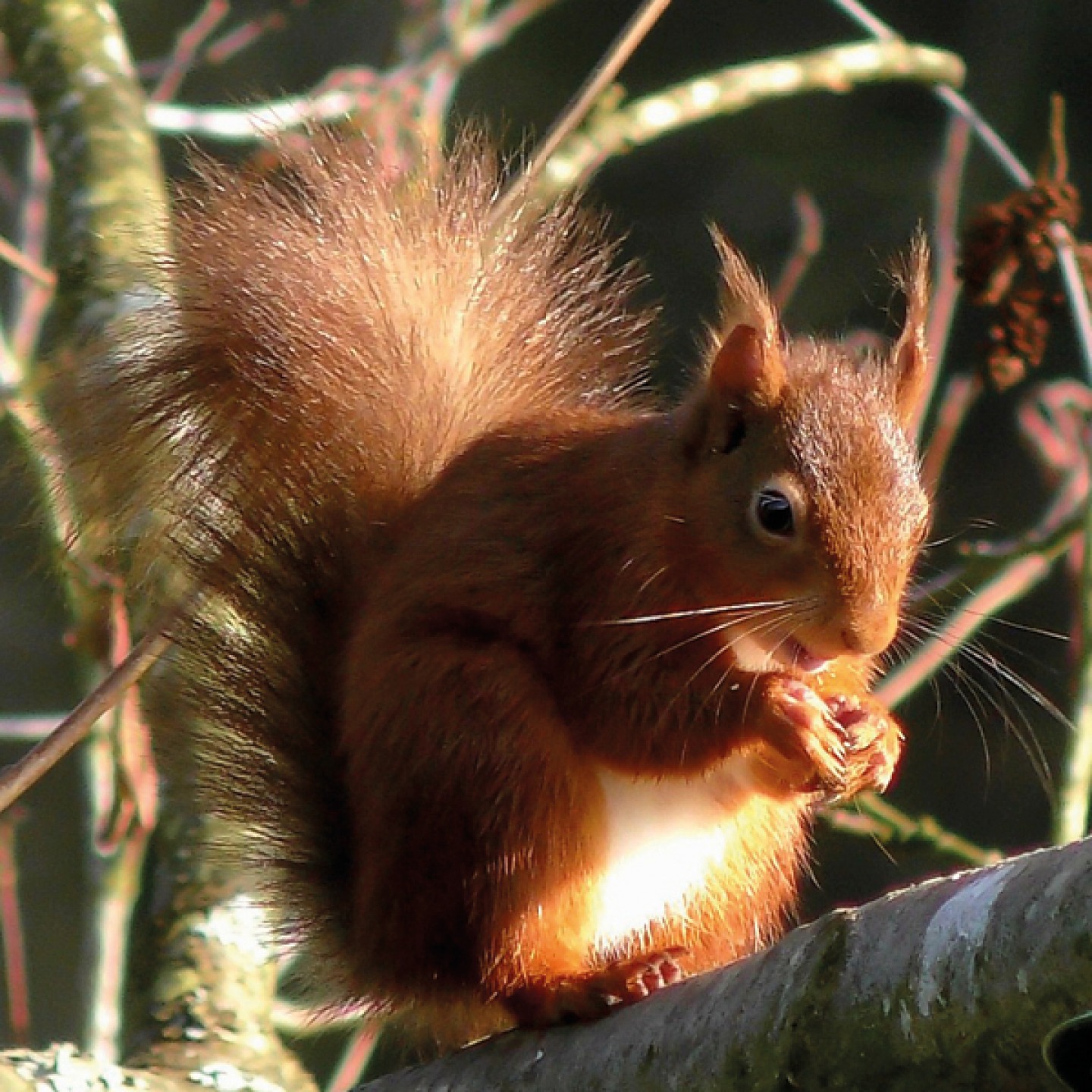
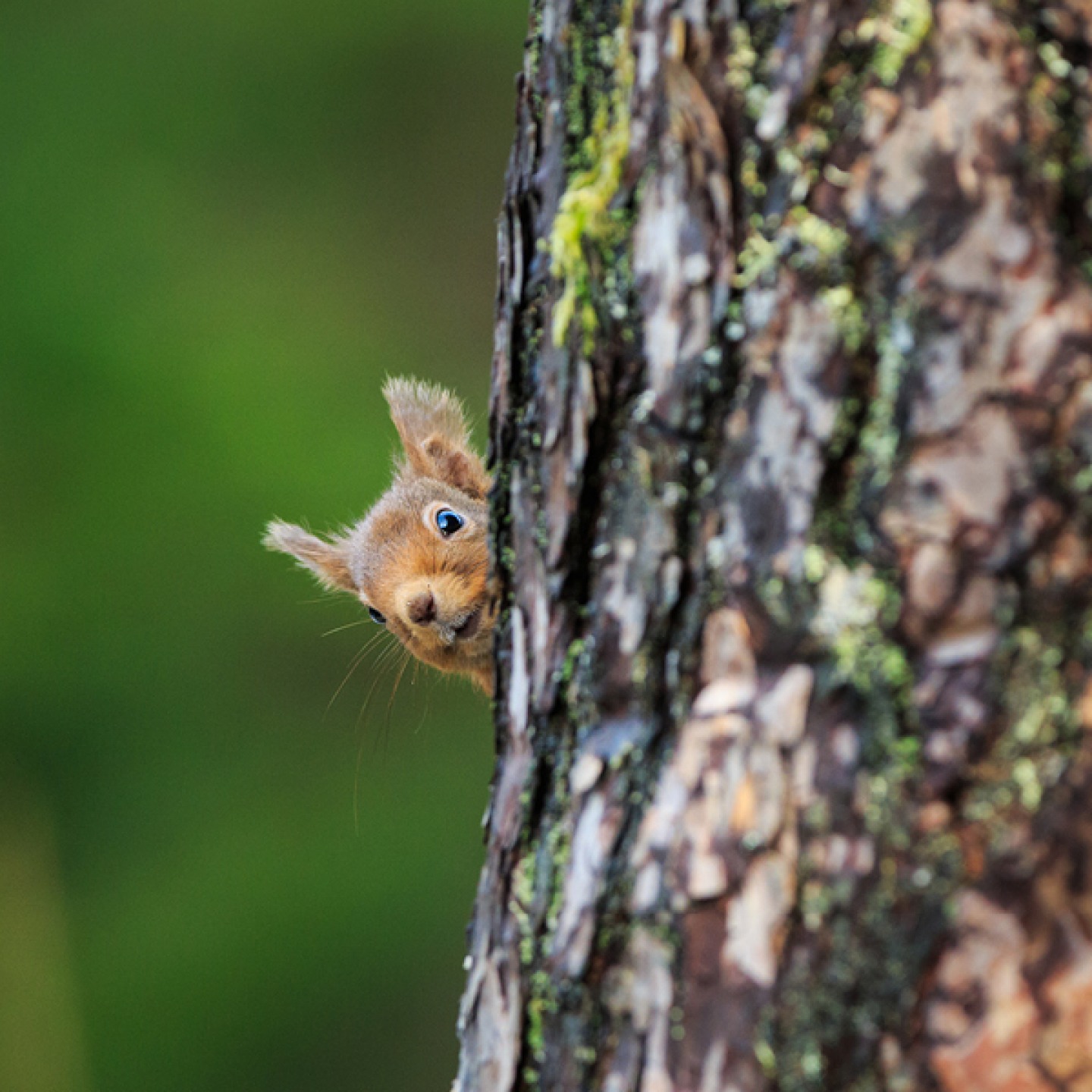
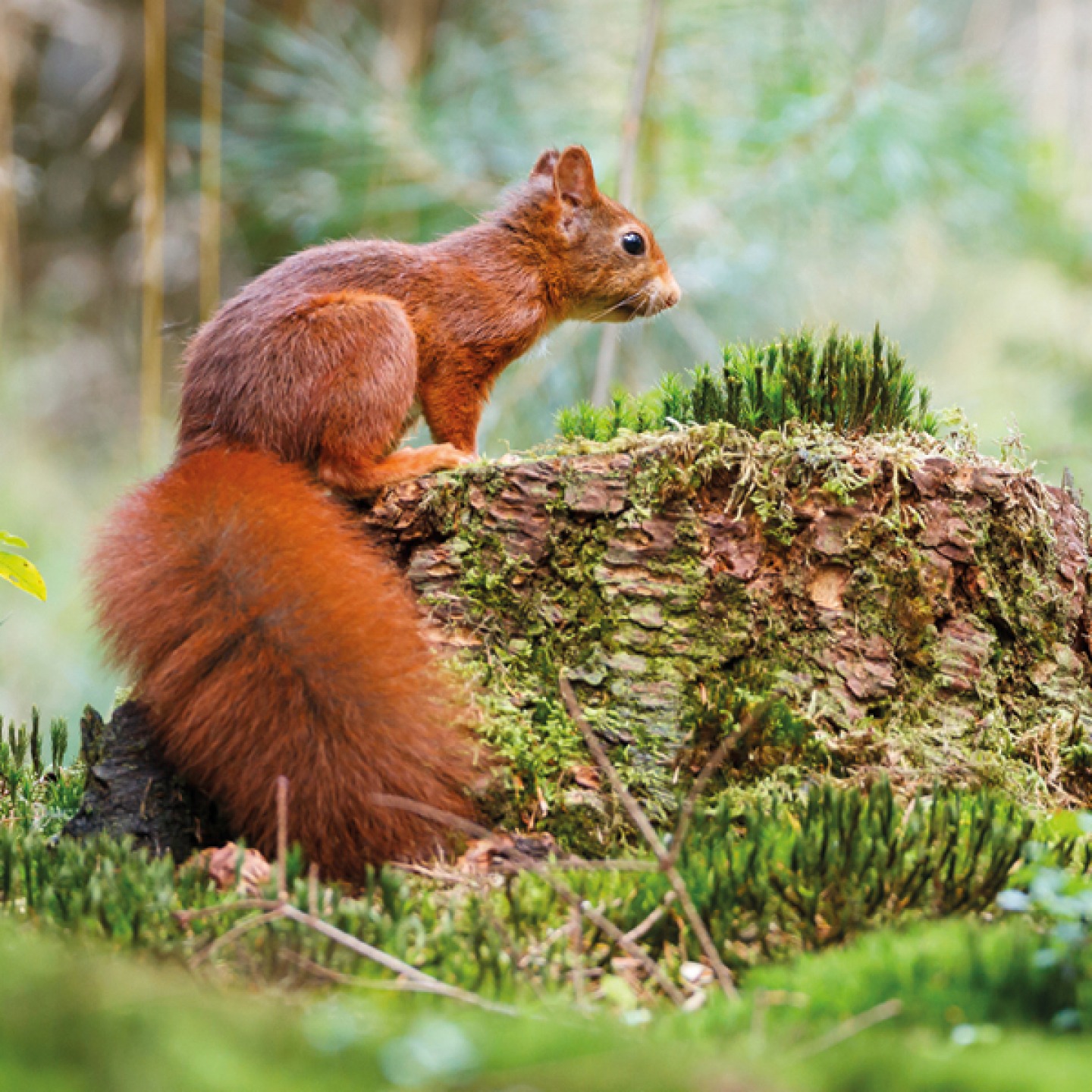
North American grey squirrels were brought into the UK in 1876 and Julie explains how they are classed as a pest and are considered one of the worst invasive non-native species. ‘The grey squirrel population is at least 2.7 million in the UK and grey squirrel are hosts of squirrel pox virus disease (SQPVD) which is fatal to red squirrels. Greys also bark-strip ecologically and economically important broadleaf trees with an estimated cost to commercial forestry in England and Wales of at least £37 million a year.’
Thankfully, Julie is feeling positive about the future of the red squirrels in this area. ‘Discovering them here for the first time had me initially feeling stunned and very emotional as I really wasn’t expecting to find any,’ she says. ‘On subsequent visits I have stood completely hypnotised by these enchanting creatures right in front of me in the most idyllic of surroundings. It’s absolutely amazing. I’m overjoyed with immense hope for their future.
‘I am optimistic for their future as with consistent conservation efforts in place to aid their recovery they can survive and thrive.’
Now Julie has extended her survey and established a volunteer group, she hopes to encourage more local volunteers and stakeholders to get involved and allow access to woodland so volunteers can continue their conservation efforts to help identify, protect, strengthen and aid red squirrel recovery in their natural habitat and you can really help by reporting any squirrels that you see or hear about at northernredsquirrels.org.uk/report-sightings.







